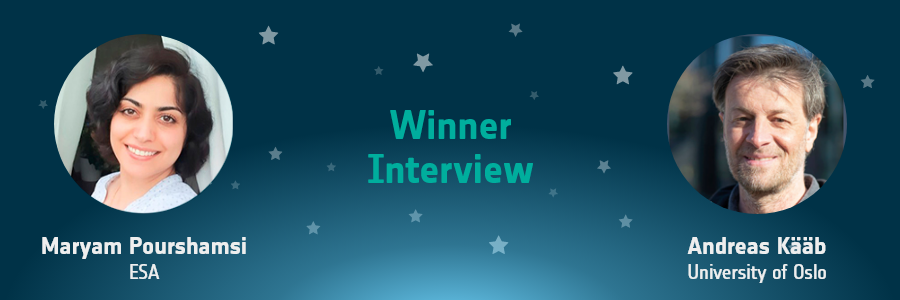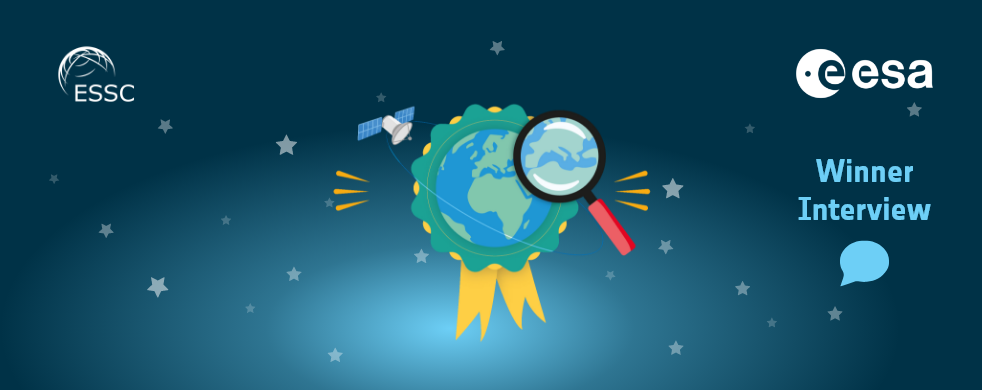Project name: Global glacier mass continuity
Team: Désirée Treichler, Solveig H. Winsvold, Bas Altena, Luc Girod, and Andreas Kääb (team leader). Other team members, not included in this nomination: Livia Piermattei, Chris Nuth, Robert McNabb, Paul Leclerq, Adrien Gilbert, and Thomas Schellenberger
The team of researchers, led by Andreas Kääb, was awarded the Team EO Excellence Award 2023 for their project for using satellite laser and radar altimetry, optical stereo, and digital elevation models to measure and analyse glacier thickness changes. These measurements were then converted into global glacier mass budgets. The study also involved processing repeated optical and radar satellite images to track glacier flow displacements and their annual to decadal changes. The analysis contributed to advancements in glacier and Earth science, offering insights into glacier responses to climate change, spatial-temporal variability, and the instability of glacier flow, ultimately improving understanding of dynamic thickness change effects.
Maryam Pourshamsi (MP) from ESA spoke to Andreas Kääb (AK) about his experience with the EO Excellence Award half a year after his team won the Team Award 2023.

MP: Please give us a sneak peek of the project for which you won the EO Excellence Award.
AK: Glaciers are one of the clearest indicators for climate change, and their changes have a range of impacts from local to global scales, from water resources to natural hazards and sea level rise. The core idea of the project “Global Glacier Mass Continuity” was to measure glacier volume changes and glacier flow with unprecedented accuracy using Earth observations (EO), and to combine both variables in order to better understand glacier response to climate change. The term “mass continuity” refers to this latter combination because glacier flow draws ice masses from one place to another within a glacier causing corresponding changes in glacier geometry. Monitoring and understanding the balance between these processes eventually helps to better quantify glacier mass losses (and in some regions actually mass gains) and their contributions to river run-off and sea level rise.
MP: What motivated you to participate in the EO Excellence Award as a Nominee?
AK: My main motivation to apply for the award was to rise acknowledgement for my team. The project team consists of a number of (former) PhD students and Postdocs, funded mainly by the European Research Council (ERC) and ESA. Four key team members are named in the award, but there are several more that contributed to the team effort and that we would like to acknowledge. I am still very inspired by working together with the PhD students and postdoctoral researchers that were involved in the glacier project. Only the intense and open collaboration with these highly motivated and skilled early career scientists enabled the progress we made and that we couldn’t have accomplished as disconnected individuals. Even if more people were involved during the project, I am extremely happy and satisfied to see Désirée, Solveig, Bas and Luc receiving such high-level recognition for their exceptional work.
MP: How was your experience with the EO Excellence Award?
AK: This was a very straight, smooth and very well and professionally supported process. As scientists we are constantly questioning what we do, what meaning it has for science and society (that funds us after all. Thanks!), and if our results are reliable enough to server for the small and large decisions they support. It is thus extremely pleasant to get such an ensuring confirmation as the ESA-EGU EO Excellence Award is. That this award is presented by collaboration between ESA and EGU, and with contribution from ESSC, makes it particularly precious for us. Thanks to the people and institutions that make this award possible, in the foreground and the background!
MP: What is the role of European EO satellite datasets in your project?
AK: We used a combination of data sets from ESA and EU Copernicus, from European commercial actors, and other non-European data sources. These data sets were highly complementary and our project would not have been possible without the European data components. Our research is much based on, among other missions, Sentinel-1 and Sentinel-2, CryoSat-2, or SPOT6/7 and Pléiades high-resolution optical stereo.
MP: Your research helped to define and justify ESA’s Earth Explorer 10 Harmony Mission. What does that mean for the future of your project?
AK: The award is a great motivation for us to develop methods for improved EO-based cryospheric monitoring for scientific and applied purposes, for instance within the ESA Climate Change Initiative, the upcoming ESA Climate Space, and not least for the EarthExplorer10 mission Harmony. Our results helped to define and justify ESA’s newly selected EarthExplorer 10 Harmony mission. Now, we are even more motivated to contribute to the better understanding of the powerful impacts and feedbacks that changing ice is causing on Earth, and to develop EE10 Harmony towards providing critical data for this improved understanding. Finally, we hope very much that the award is also seen as a recognition of the entire cryospheric EO community for its important work and collaborations.
MP: Your research has helped understanding the impact of climate change on glaciers. How can this help policymakers to better combat the issue of climate change?
AK: We are proud that our methods and results were and are widely used and communicated. Several of our results are for instance used in reports of the 6th assessment cycle of the Intergovernmental Panel on Climate Change (IPCC) and reach thus policymakers up to the highest international levels. Our methods are applied to improve Sentinel-2 products, and within the ESA Climate Change Initiative and the Norwegian national Copernicus Service. We apply our methods and results also to local problems, for instance for hazard assessments and to improve hazard management related to cryospheric hazards such as glacier lake outbursts or ice avalanches.
If you know someone who deserves to win the EO Excellence Award 2024, please nominate them on https://www.eoxcellence.com/!
About the Author

Maryam Pourshamsi is an Earth Observation Scientist at European Space Agency. She coordinates the EO Excellence Award 2024. The award recognises and honours an individual early career scientist and team that have made an outstanding contribution to the innovative use of Earth Observations, with a focus on the use of European EO datasets in the field of science and applications.




